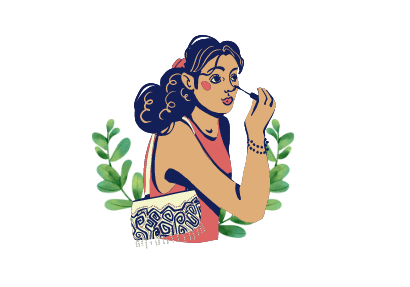Here is your complete guide to Swedish chocolate.
Introduction to Swedish Chocolate
Swedish chocolate is more than just a sweet treat; it’s a cultural icon, a symbol of fika, and a testament to the Swedish knack for blending quality with innovation. From the familiar Kexchoklad to the creamy delight of Marabou, Swedish chocolate has carved a unique niche in the global confectionery market. But what makes Swedish chocolate so special? Is it the creamy texture, the use of unique Nordic ingredients, or perhaps the rich history that accompanies each bite? This article will explore the fascinating world of Swedish chocolate, delving into its history, popular types, brands, flavors, and how it has become an integral part of Swedish culture.
Sweden’s relationship with chocolate began in the 17th century, transforming from a luxury item for the elite to an everyday pleasure enjoyed by all. Today, Swedish chocolate continues to evolve, blending traditional methods with modern innovations to create unique and irresistible flavors.
The History of Swedish Chocolate
The story of Swedish chocolate begins in the 17th century when chocolate was first introduced to Sweden. Initially, it was a rare and expensive commodity, accessible only to the wealthy elite. Chocolate houses started to appear in major cities, serving as social hubs where the upper class could savor this exotic beverage.
Over time, as production methods improved and costs decreased, chocolate gradually became more accessible to the general population. In the 19th century, the first chocolate factories were established, marking the beginning of domestic chocolate production. These early pioneers laid the foundation for the industry that we know today.
Chocolate became deeply intertwined with Swedish culture, particularly with the concept of fika. Fika, a Swedish tradition of taking a break to enjoy coffee and a sweet treat, often includes chocolate. Whether it’s a chocolate cake, a chocolate bar, or a chokladboll, chocolate has become an essential part of this cherished ritual.
Popular Types of Swedish Chocolate
Swedish chocolate comes in a variety of forms, each with its unique appeal. Here are some of the most beloved types:
- Kexchoklad: This iconic chocolate bar consists of layers of crispy wafer covered in milk chocolate. It’s known for its satisfying crunch and is a staple in Swedish homes and outdoor adventures.
- Marabou Milk Chocolate: Marabou is perhaps the most well-known chocolate brand. Its creamy milk chocolate is famous for its melt-in-your-mouth texture and rich flavor.
- Daim: This crunchy almond caramel bar coated in milk chocolate is another Swedish chocolate favorite. Its unique texture and buttery caramel flavor make it incredibly addictive.
- Dumle: These chewy toffee candies covered in milk chocolate are popular among both children and adults. Their soft and sweet filling combined with the smooth chocolate exterior make them a delightful treat.
- Chokladboll: These chocolate balls, made from oats, cocoa, sugar, and coffee, are rolled in coconut flakes. Chokladbollar are a traditional homemade treat, often enjoyed with coffee or as a quick snack.
Popular Types
| Type | Description | Unique Features |
|---|---|---|
| Kexchoklad | Crispy wafer covered in milk chocolate | Satisfying crunch |
| Marabou | Creamy milk chocolate | Rich, melt-in-your-mouth texture |
| Daim | Almond caramel bar coated in milk chocolate | Crunchy toffee, buttery flavor |
| Dumle | Chewy toffee candies covered in milk chocolate | Soft toffee filling, smooth exterior |
| Chokladboll | Oat, cocoa, sugar, and coffee balls | Homemade, rolled in coconut flakes |
The Best Brands
Several brands have made a significant impact on the chocolate landscape. Here are some of the most notable:
- Malmö Chokladfabrik: Malmö Chokladfabrik focuses on producing high-quality, artisanal chocolate. They use carefully selected cocoa beans and traditional methods to create unique and flavorful chocolate bars.
- Fazer: Although Fazer is a Finnish brand, it has a strong presence in Sweden and is renowned for its classic blue-wrapped milk chocolate bars. Fazer has a long history of producing high-quality chocolate and is a household name in both Finland and Sweden.
- The Swedish Cocoa Company: This brand is committed to ethical and sustainable cocoa sourcing. They produce a range of chocolate products, emphasizing natural ingredients and unique flavor combinations.
Leading Brands
| Brand | Description | Key Products |
|---|---|---|
| Malmö Chokladfabrik | Artisanal chocolate maker | High-quality chocolate bars |
| Fazer | Finnish brand with a strong presence in Sweden | Blue-wrapped milk chocolate bars |
| The Swedish Cocoa Company | Ethical and sustainable cocoa sourcing | Natural ingredient and unique flavor combinations |
Unique Flavors and Ingredients in Swedish Chocolate
Swedish chocolate often incorporates unique Nordic ingredients that set it apart from chocolate produced in other regions. Some of these ingredients include:
- Sea Salt: The addition of sea salt enhances the sweetness of the chocolate, creating a balanced and complex flavor profile.
- Cardamom: This aromatic spice is commonly used in chocolate and adds a warm, slightly citrusy note.
- Licorice: Licorice is a popular flavor in Scandinavia, and it’s often combined with chocolate to create a distinctive and adventurous taste.
Some brands also focus on producing healthier options, using organic cocoa beans, lower sugar content, and natural sweeteners. This reflects the growing trend towards health-conscious eating and the demand for guilt-free chocolate treats.
Unique Flavors and Ingredients
| Ingredient | Description | Flavor Profile |
|---|---|---|
| Sea Salt | Salt harvested from the sea | Enhances sweetness, adds complexity |
| Cardamom | Aromatic spice | Warm, slightly citrusy |
| Licorice | Sweet and savory root | Distinctive, often combined with chocolate |
How to Enjoy Swedish Chocolate
Swedish chocolate can be enjoyed in many ways. Here are some suggestions:
- Pairing with Coffee: In line with the fika tradition, chocolate pairs perfectly with coffee. The bitterness of the coffee complements the sweetness of the chocolate, creating a harmonious balance.
- Pairing with Tea: Different types of chocolate can be paired with various teas. For example, a rich milk chocolate pairs well with black tea, while a dark chocolate with sea salt complements green tea.
- Incorporating into Desserts: Swedish chocolate can be used in a variety of desserts, such as chocolate cakes, brownies, and mousse. Its unique flavors can add a special touch to your homemade creations.
Pairing Suggestions for Swedish Chocolate
| Chocolate Type | Beverage Pairing | Dessert Ideas |
|---|---|---|
| Milk Chocolate | Coffee, Black Tea | Chocolate Cake, Brownies |
| Dark Chocolate | Green Tea | Mousse, Chocolate Covered Fruit |
| Daim | Espresso | Ice Cream Topping, Crumbles |
Swedish Chocolate Compared to Others
| Feature | Swedish Chocolate | Swiss Chocolate | Belgian Chocolate |
|---|---|---|---|
| Common Types | Chocolate bars are most common. Kexchoklad, Marabou milk chocolate, Daim, Dumle, Chokladboll | Milk chocolate is very common4. | Dark chocolate4, pralines, and chocolate truffles are popular1. |
| Flavor Profile | Often incorporates Nordic ingredients like sea salt, cardamom, and licorice [Article generated before search results]. | Creamier and smoother1. May have a slightly higher fat content than US versions8. | Higher cocoa content, often darker and more bitter14. |
| Texture | Creamier [Article generated before search results]. | Smoother14. | N/A |
| Cocoa Sourcing | N/A | Acquires beans from both Africa and Latin America4. | Primarily from Africa4. |
| Key Characteristics | Swedes are picky when it comes to their chocolate5. Fika is an important part of their culture which includes chocolate. | The Swiss invented and perfected milk chocolate1. Swiss chocolatiers are considered masters of the profession1. The Swiss came up with the idea to add cocoa butter and the method to do it which gave chocolate a much nicer texture4. | Belgians invented the praline and chocolate truffle14. Belgians transport their chocolate in heated trunks1. Experiment with exotic fillings1. |
Read Also: White Orange Green Macaroni.
FAQs about Swedish Chocolate
Here are some frequently asked questions about Swedish chocolate:
What is the most popular type of Swedish chocolate?
Marabou Milk Chocolate is often considered the most popular due to its wide availability, creamy texture, and rich flavor. Kexchoklad is also a strong contender, loved for its crispy wafer layers.
Read Also: Greek Lemon Chicken and Potatoes.
How is Swedish chocolate different from Swiss chocolate?
Swedish chocolate often incorporates unique Nordic ingredients like sea salt, cardamom, and licorice. While Swiss chocolate is known for its smooth texture and high cocoa content, chocolate tends to have a creamier, sweeter profile.
Read Also: What Goes with Potato Soup.
Are there vegan options available in Swedish chocolate?
Yes, there are an increasing number of vegan chocolate options available in Sweden. Several brands offer dark chocolate bars made without dairy, and some even produce vegan versions of popular chocolate treats.
Read Also: Sweet Potato Butter.
Where can I buy authentic Swedish chocolate?
Authentic chocolate can be purchased in many grocery stores throughout Sweden. Outside of Sweden, you can find Swedish chocolate in specialty import stores, online retailers, and some international supermarkets.
Read Also: Garlic Parmesan Chicken and Potatoes.
Conclusion
Swedish chocolate is more than just a chocolate; it’s a reflection of Swedish culture, traditions, and values. From its humble beginnings as a luxury item to its current status as a beloved treat, chocolate has evolved and adapted to changing tastes and trends. Whether you’re indulging in a creamy Marabou bar, enjoying a crunchy Kexchoklad, or savoring a homemade chokladboll, chocolate offers a unique and satisfying experience.
Read Also: Fruity Pebbles Ice Cream.
So, the next time you’re looking for a delicious treat, why not explore the world of chocolate? With its diverse flavors, high-quality ingredients, and rich cultural heritage, Swedish chocolate is sure to delight your taste buds and leave you wanting more.
Read Also: Sweet and Sour Chicken Wings.

